Date: February 23, 2022
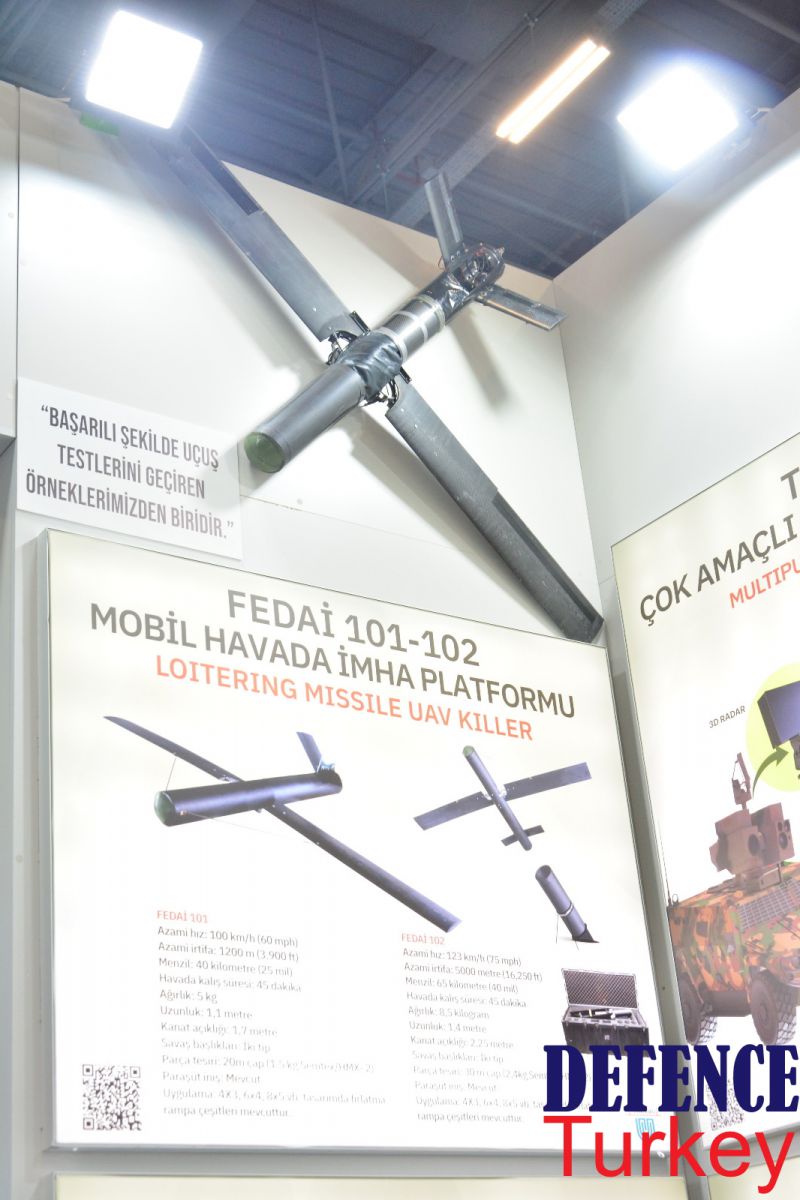
TRANSVARO Board Member Güray Ali CANLI shared the following information about the FEDAI Loitering Munition UAV Killer, which has been developed against Kamikaze Drones and has a structure made entirely of carbon fiber material. “FEDAI is a part of the system which we call the Drone Killer. It flies to the target via radar guidance, then tracks the target with its onboard EO camera, and detonates its warhead near the target. This is the world’s first platform with such features. The second key feature is the folding-wing mechanism. It's a plane, it glides when you turn off its engine. As the other models stay in the air with the engine power and do not have the gliding feature (free gliding), they all fail when the engine is turned off. So, what we have achieved is that it provides us a very critical control advantage and the opportunity to stay in the air for a longer time.”
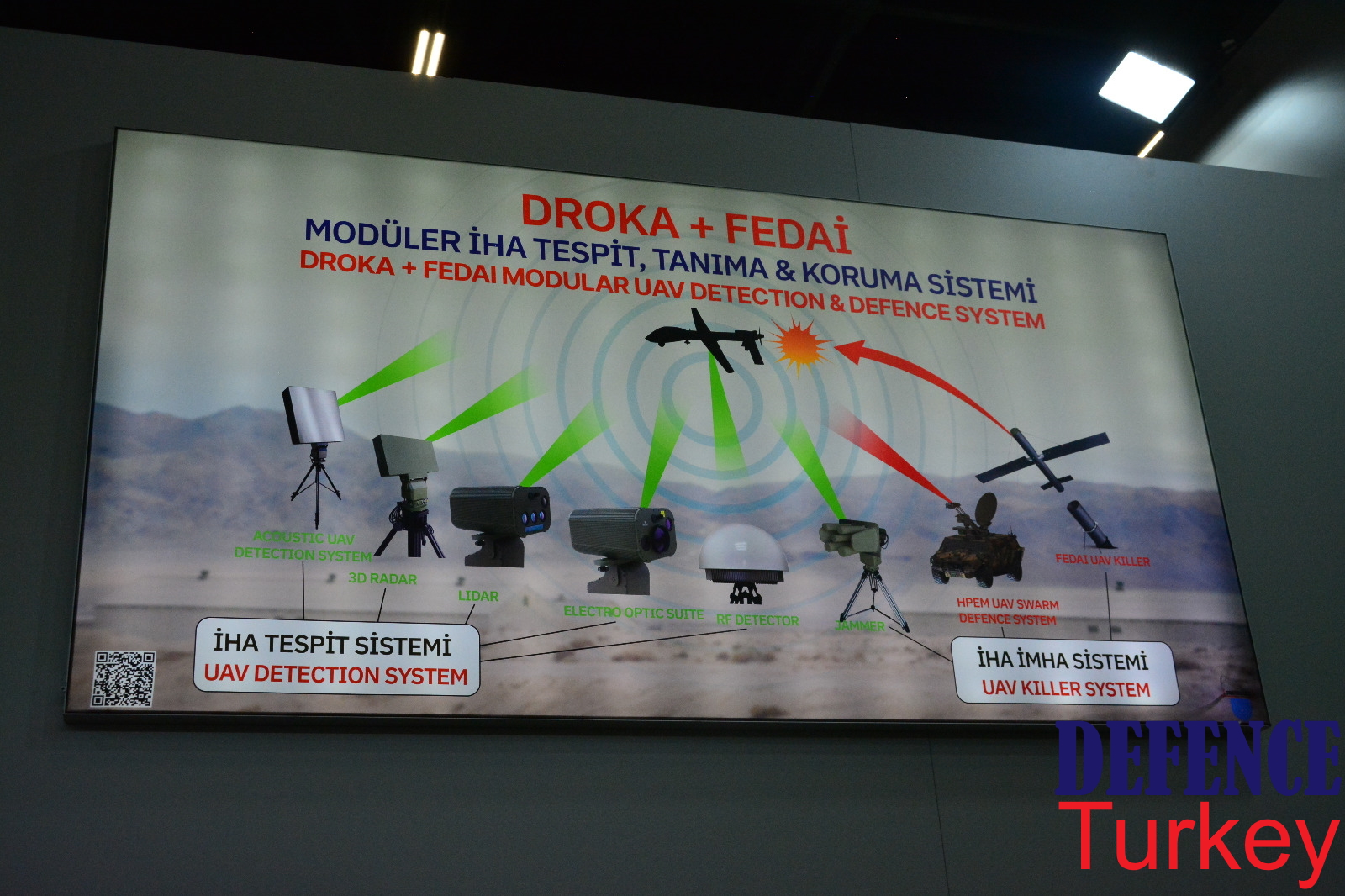
TRANSVARO TRV-DROKA + FEDAI Modular UAV Detection, Recognition & Defense System
The TRV-DROKA + FEDAI Modular UAV Detection, Recognition & Defense System comprises TRV/GSR 0802 3D Drone Detection Radar (detection distance 6 km+), TRV/Guard 21 EOS System (detection distance 23.4km for a 2.3x2.3m target), TRV-LDR-100 LIDAR (detection range 1 km for a drone/UAV with 2m wingspan), HRFD-U360 RF Sensor (300MHz-6,000MHz operating frequency range, detection distance 5 km+) and Acoustic UAV Detection System products. The Counter UAV System is composed of RF Jammer (operating on 7 separate bands specific to drones), HPEM UAV Defense System (200m effective range against swarm UAV attack, the final defense line for autonomous drones and drone swarms) and FEDAI Loitering Munition Platform.
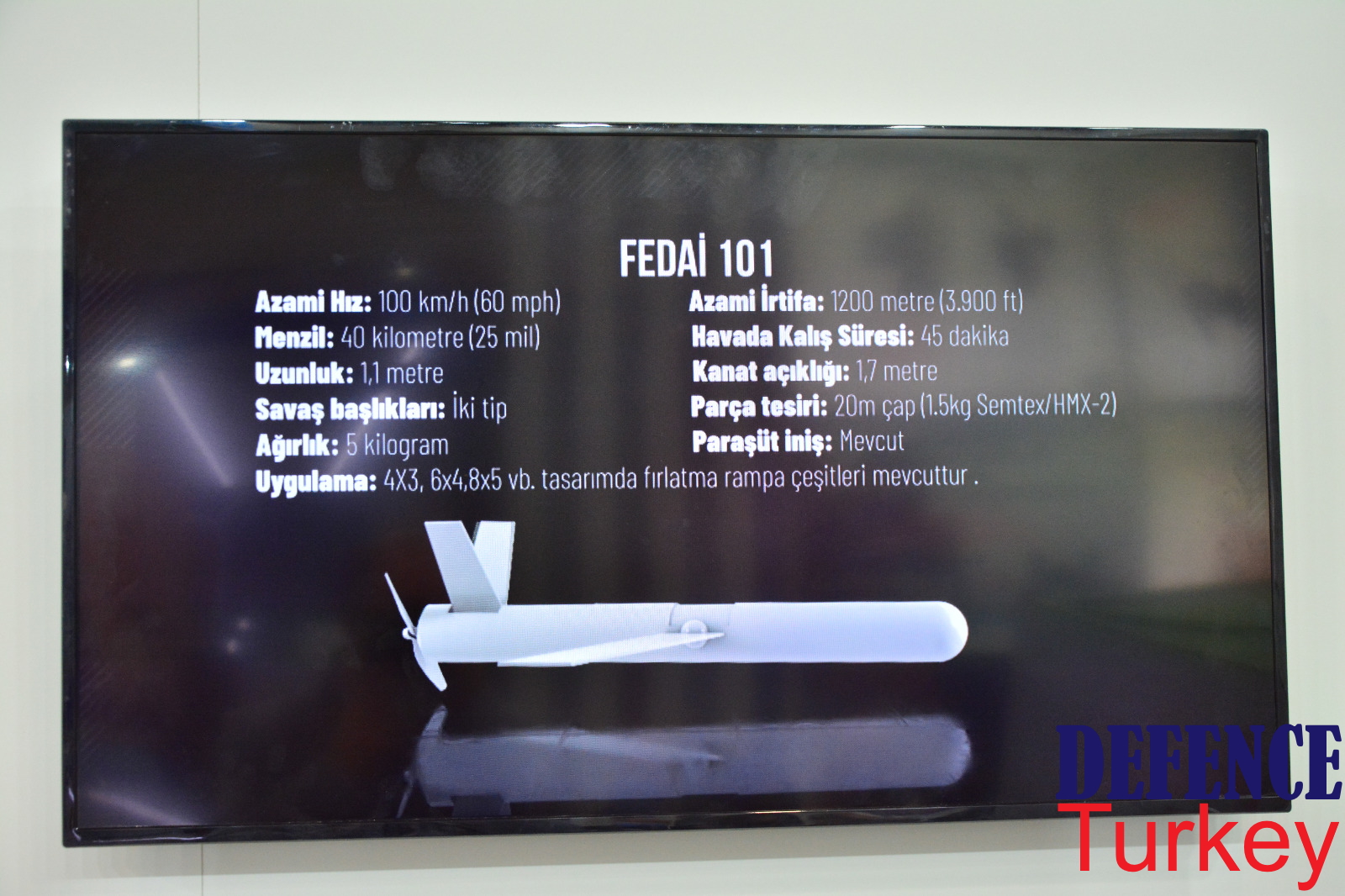
With a length of 1.1m, a wingspan of 2m, and a weight of 7kg, the FEDAI 101 can reach a maximum speed of 140km/h and an altitude of 1.200m (AGL/Above Ground Level), while the FEDAI 102 with a length of 1.4m, a wingspan of 2.35m and a weight of 8.5kg, can reach a maximum speed of 153km/h and an altitude of 5,000m (thanks to the more powerful engine and different wing and tail structure). The FEDAI 101 has a range of 40km, while the FEDAI 102 has a range of 65km. Both Loitering Munition Platforms can stay in the air for 35 minutes. The 1.7kg Semtex/HMX-2 warhead in FEDAI 101 has a blast area of 50m (directional fragmentation effect), and the 2.4kg Semtex/HMX-2 warhead in FEDAI 102 has a blast area of 60m (previously, it was stated that it contains 1kg of thermobaric PBX explosive charge with approximately 10,000 sub-projectiles). Both platforms have parachute recovery capability and can be launched from a single launch tube or multiple launchers (4x3, 6x4, or 8x5).
.jpeg)
The operating principle of TRV-DROKA + FEDAI Modular UAV Detection, Recognition & Protection System can be summarized as: The drone/UAV is detected with 3D radar on the ground, then the EO System confirms that the detected element is a threat and determines the coordinate to intercept the target. Subsequently, this information is uploaded to FEDAI's autopilot on the ground. Then, the FEDAI Loitering Munition is launched towards the determined intercept point (within FEDAI's field of view [FoV]). FEDAI, which automatically flies to the estimated intercept point with the help of autopilot, starts tracking the target by activating the seeker on its nose from a certain distance (the seeker includes day/night and thermal cameras as well as LIDAR). When FEDAI is within 70m of the target, it activates the LIDAR system and decides where to detonate its warhead (if it's a single target, in front of it, if it's a UAV swarm, in the middle). When necessary, FEDAI's warhead can be detonated manually from the ground. In cases two FEDAIs are launched at a target, if the target is hit, the second FEDAI can be exploded in mid-air (if it is above a residential area) or parachuted to the ground and prepared for reuse (outside of residential areas). FEDAI can also be fired from UAVs if required. FEDAI can be carried on UAVs with its wings extended or in a tube mounted under the wing of the UAV.
In ITAR-Free FEDAI UAV Killer System, the thermal cameras, LIDAR, 3D radar, and autopilot are domestic products, while the battery and electric motors are commercial off-the-shelf products (COTS) that can be obtained from different sources. Indigenization studies on the foreign-origin image processing board and warhead used in the prototype system continue.
FEDAI UAV Killer and HAVELSAN Integrated UAV Detection & Defense System (HVL-EİTSS)
HAVELSAN Business Development Manager Nezih ŞİŞMAN previously made a presentation within the scope of the 3rd International Military Radar and Border Security Summit, which was held at Hacettepe Beytepe Congress Center on October 5-6, 2021, and shared remarkable information on the FEDAI UAV Killer, which is a part of the HAVELSAN Integrated UAV Detection & Defense System (HVL-EİTSS) solution developed in cooperation with solution partners TRANSVARO.
In his presentation at the 3rd International Military Radar and Border Security Summit, HAVELSAN Business Development Manager Nezih ŞİŞMAN described the FEDAI UAV Killer System as "a tube-launched protection system with a folding-wing mechanism that is developed to thwart kamikaze UAV/Drone attacks by providing high-precision targeting capability with its image processing seeker." According to the information provided by ŞİŞMAN, the FEDAI System has interchangeable seekers and a low acoustic signature (thanks to the electric motor) and can be fired from a modular multiple launching system. FEDAI Loitering Munitions, which are planned to become operational in December 2021 (this date was later updated to May 2022), will be controlled individually or in groups with the HAVELSAN product portable Command-and-Control System (since the system performs its post-launch flight autonomously, it is stated that 32 FEDAI can be controlled at the same time). With the Command-and-Control System with two 21.5 inch full-color displays, different payloads such as Weapons, Robotic Arms, EO/IR Cameras, Radar, and LIDAR can be controlled and managed.
.jpeg)
TRANSVARO TV/LHI-01 Laser Target Designator (LTD)
TRANSVARO exhibited the ITAR-Free TV/LHI-01 Laser Target Designator (LTD), developed in Turkey, at SAHA EXPO 2021 for the first time. TV/LHI-01 is a laser target designator system, which is used to illuminate the target with the laser to direct a laser-guided munition on the target. The TV/LHI-01 Laser Target Designator has impressive performance with less than 2kg weight (1.3kg excluding accessories) and 16cm length. TRANSVARO stated that despite the small size and weight of the product, which is emphasized to be the smallest available high-energy laser target designator, it could reach the pulse energy of a full-length laser target designator (80mJ) or even exceed it. According to the product brochure, the TV/LHI-01 LTD has a range of 300μRad. Its range value is highly remarkable considering the system is air-cooled despite its energy level.
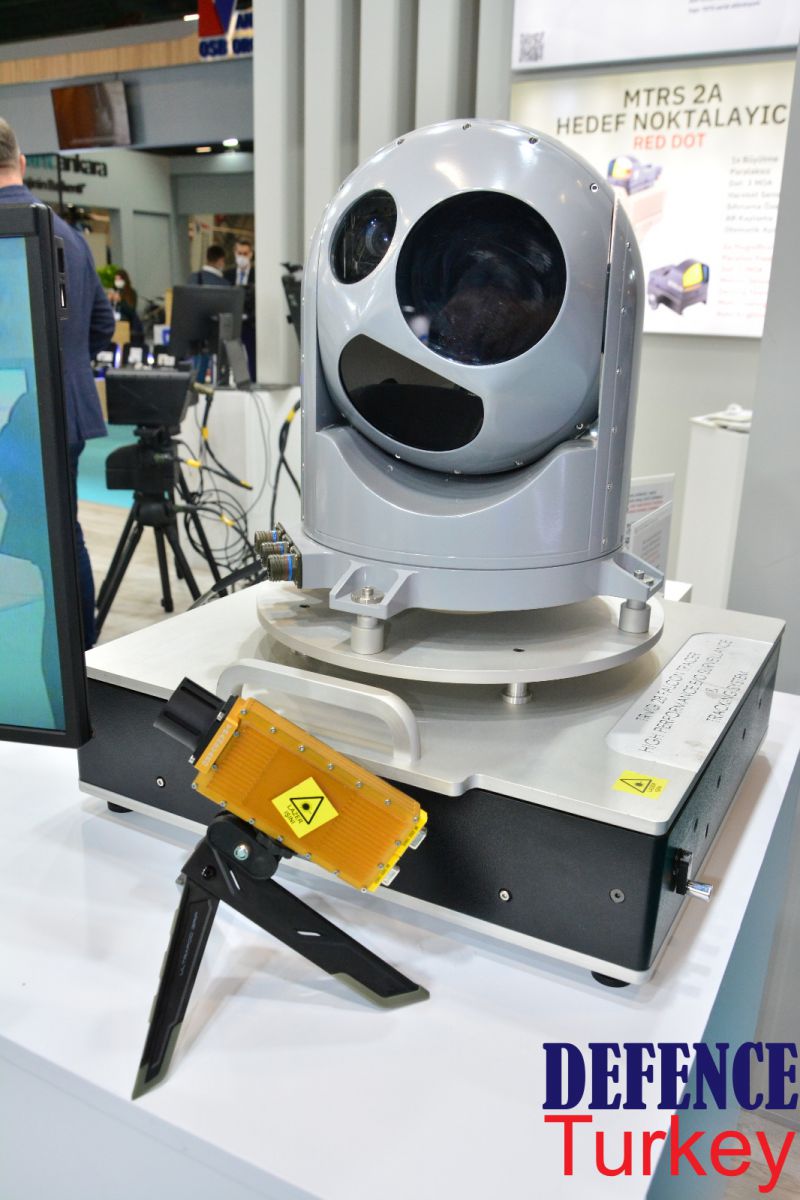
In order to overcome the heating problem in the laser, which has a MOPA type design, diode pump chips that can operate even at 100°C are used (Master Oscillator Power Amplifier, the master oscillator produces a highly coherent beam, and an optical amplifier is used to increase the power of the beam while preserving its main properties). In order for this type of laser to illuminate until the munition reaches its target, it must be able to function without a problem with high-energy pulses for long periods of time. However, high-power diode chips used in amplifier units heat up during their operation and lose their stable properties or deteriorate as they heat up. Therefore, this type of laser has a cooling system or limited operation time. TRANSVARO stated that they were able to overcome this problem with diode chips that can operate at high temperatures. It was stated that there are several patents belonging to TRANSVARO on the TV/LHI-01 Laser Target Designator.
TRANSVARO TRVG 28 Falcon Tracer High-Performance EO Surveillance and Tracking System
TRANSVARO also exhibited two members of the company's electro-optical (EO) surveillance and tracking systems family called "Falcon Tracer," 180mm diameter TRVG 18 and 280mm diameter TRVG 28. The TRVG 18 Falcon Tracer High-Performance EO Surveillance System has been developed for use in mini-UAV and tactical UAV systems. Despite weighing under 4kg, the system has a nominal power consumption of 90W, a daytime camera that can be used in low light conditions, and a cooled MWIR detector with 640x512 pixel resolution. While the system comes with a laser rangefinder and laser target pointer/illuminator devices, there is no laser target designator option.
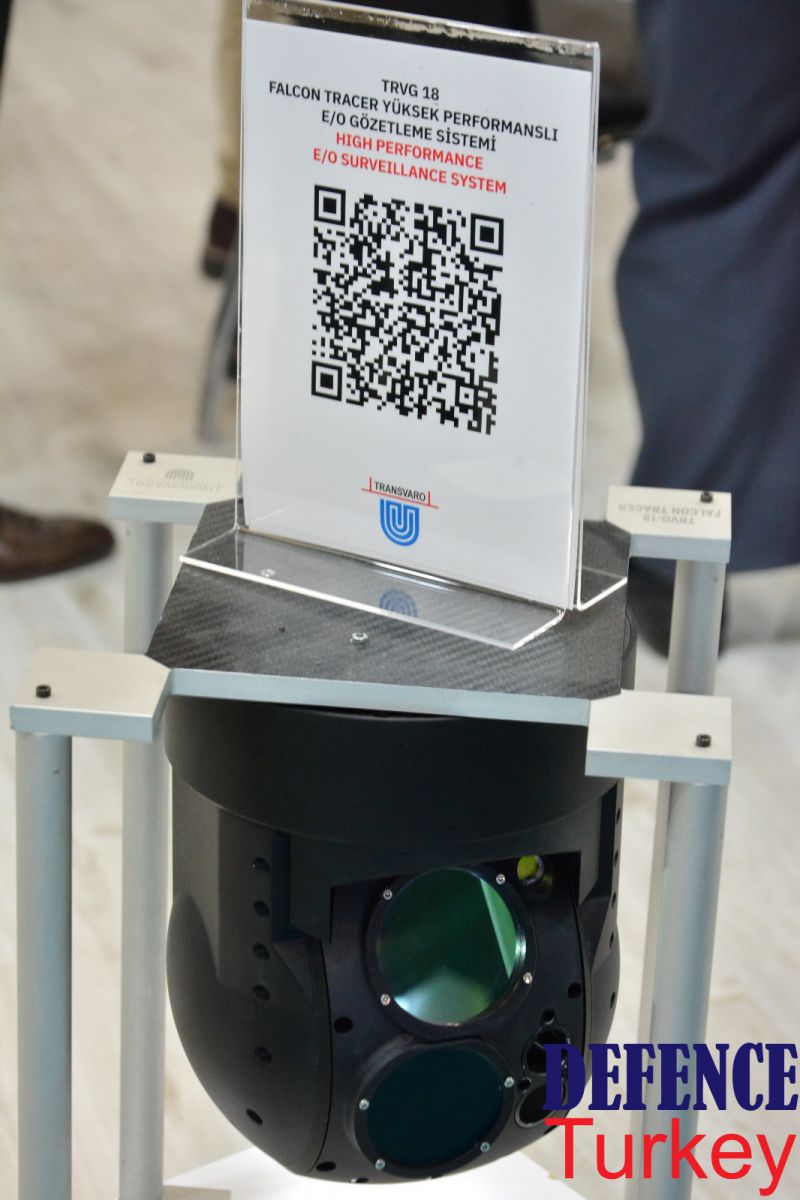
The TRVG 28 Falcon Tracer High-Performance EO Surveillance and Tracking System weighs less than 20kg and has a nominal power consumption of 300W and a cooled MWIR infrared detector, this time with an HD resolution of 1260 x 1024 pixels. The system has a laser rangefinder, pointer/illuminator, and target designator functions and options. TRVG 28 also drew attention with its similarity to the SPA280 Series FLIR System of the South African Tower35 Company.
At the fair, we also learned that TRANSVARO made an investment in infrared detectors in Ankara. In this context, it was stated that Prof. Dr. Tayfun AKIN and Prof. Dr. Cengiz BEŞİKÇİ from METU and Prof. Dr. Yüksel ERGÜN from Eskişehir University were working with TRANSVARO on this issue and that they were very close to getting results as of November 2021.
Prof. Dr. Cengiz BEŞİKÇİ has been working for many years on QWIP (Quantum Well Infrared Photodetector) infrared detectors that can replace MCT (Mercury Cadmium Telluride) materials in the future, which is the basis of the VGA resolution semiconductor cooled detectors that ASELSAN is also developing. He even produced and demonstrated experimental dual-band detectors in his lab years ago. He is also likely to be working on the next generation, high-performance Superlattice (T2-SLS) QWIP detector materials, also known as Type-2. As a result of these studies, it is expected that TRANSVARO will use these new generation detectors instead of the infrared detectors currently procured from abroad.